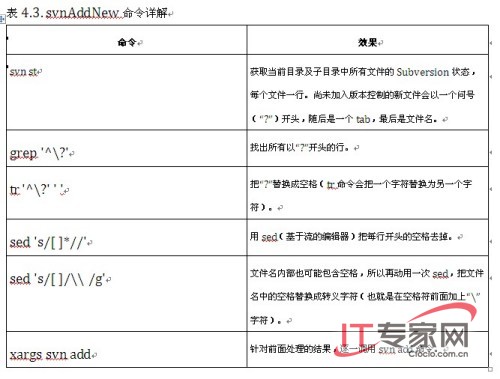(Google 的 Vice President Marissa Mayer)
這裡提出,企業要有三種利用外部知識的能力:
一、爬梳企業外部的可行創意的能力絕對必要,但是光有這個還不足夠。
二、管理階層必須確保這些嶄新的創意得以到達有能力善用的人身上。
三、有「創意偵察人」( idea scouts) 以及「創意連結者」(idea connectors)的技巧就更為完善。
一樣是大企業,為何像是 Procter & Gamble 、Intel 以及 Cisco 等公司能夠藉由「開放式創新」的方式在同業間保持領先地位,而其他仿效該創新模式的企業卻無法達到相同效果?原因在於:這些公司無能確保這些來自外部的意見得以傳達到有能力運用這些意見的人身上。
改變這種狀況,必須要仰賴兩種所謂的「創新經理人」(Innovation Broker),也就是「idea scouts」以及「idea connectors」。
一個實際案例:A 軟體公司輸掉了一紙大合約,只因對手多了一項「更先進的語音辨識功能」。事實上,A 公司早在一年前就有公司員工發現同一項技術,並立即通報給該公司的技術主管知道。後來因為該技術主管在人際網絡裡找不到信得過的專業人士來諮商,所以遲遲沒有相關動作,直到錯失良機。
在這個案例中,我們看到了 idea scout 的角色的重要性,也發現缺乏 idea connector 的結果就是讓偵察到的創意無從擴散到適合的人身上、也沒有機會被消化應用。
下圖說明 Idea Scout 以及 Idea Connector的角色運作:
從上圖,我們看到 C 先生雖然時常進行創意偵察的動作,也努力將可行的創意傳遞給認識的研發部門。礙於 C 先生與公司內部研發部門的連結有限,創意始終沒有到達對的人身上,也沒有擴散到足以產生影響的規模,因為「信箱超載」的現象讓人習慣將與自己現有工作「不直接相關」的信息刪除。 C 先生的能力雖然重要,卻被浪費了。
A 先生就幸運的多,他擁有大量的外部連結、大量的創意,更重要的是他與 B 小姐 – 一位能連結到內部研發部門每個人的 idea connector – 有扎實的連結,所以他偵察到的創意得以透過 B 小姐進行擴散,到達有能力近一步分析、應用的研發人員身上。
文中所舉的 idea connector 在真實世界裡的化身,就是 Google 的 Vice President Marissa Mayer。她採用的方法之一就是舉行為期三週的面談,跟想提出新點子的人一起發想、並壓榨出更多關於這些創意的功能細節,然後再來決定要不要往上提給 Larry Page 以及 Sergey Brin.
在開放式創新(Open Innovation)的過程中,Idea scouts 以及 idea connectors 最能發揮貢獻的三個階段:成形(Ideation)、篩選(Selection)、擴散(Diffusion)。
如下圖所示:
成形(Ideation)
雖然所有員工都有取得公司外部創意的能力,僅少數人有技術專長與個人興趣來定期地、有效的進行此任務。管理者只要提供足夠的資助讓這些人進行創意的搜尋,但是這些人最需要的是「時間」。文中的案例是一家藥廠,已經指派其 idea scout 的擔任者投入全部時間進行創意偵查。
除了資源與電腦連線外,參加如會議、商展等等公司外部的聚會或活動,也很重要。除了可以多幾條創意的渠道,也同時向外宣示公司對創新的支持與參與。
篩選(Selection)
只要有鍵盤、滑鼠、跟網路連線,任何人都能把創意跟想法發佈道網路上,如何從爆量的訊息中分離出有用的資訊才是最難的步驟。所以 idea scout 跟 idea connector 這兩者的互動之所以重要,不僅僅因為這樣才能挑出有展望、又合適該企業的創意,更重要的是能辨別爬梳回來的創意是否真實可靠、而非誇大的行銷說詞。
擴散(Diffusion)
一旦確認新概念有潛力,就必須擴散到知道如何應用的人身上。像 Marissa Mayer 這樣的 idea connectors 雖然因其專業能力受僱,卻同時具備社交天賦。日積月累,這些人進化成具備跨領域知識與廣泛興趣的通才。善用 idea connectors 的方式就是讓他們多參與不同專案或是工作調動,藉以發揮其影響力。
投資「創新經理人」
企業領導人必須認清,光把新點子和技術引進組織裡並無法達成「開放式創新」。點子不會自己長大成創新的成果,除非這些創意能到達有能力與影響力的員工們身上。不管網路如何改變知識與創意的發佈與流動,innovation broker 的角色依然吃重。管理者能夠投資 idea scouts 與 idea connectors 並確保這兩者有確實連結,開放式創新就在不遠處了。
(本文資料摘譯自 MIT SloanN Management Review)























